Delve into the mystery of whether Jesus danced, exploring cultural contexts and scriptural nuances that hint at His life's celebratory aspects.
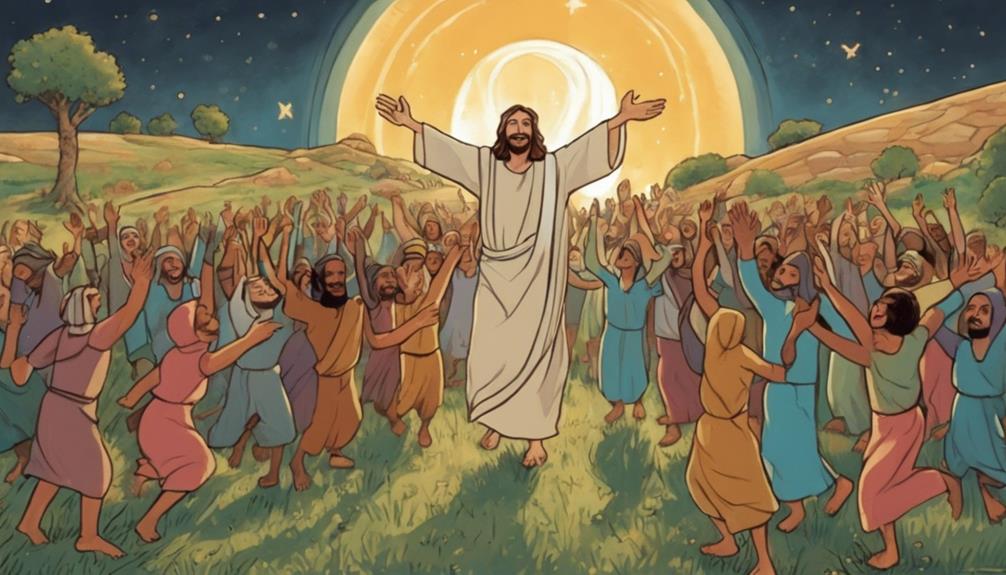
Did Jesus Dance in the Bible
Navigating the biblical narrative to uncover whether Jesus danced is akin to embarking on a treasure hunt without a map. You're entering a realm where cultural context and scriptural mentions of dance intertwine, offering glimpses into the life of a figure who transcends history.
While the gospels don't explicitly picture Jesus in the midst of a dance, understanding the Jewish customs and celebrations of His time might suggest otherwise. As you sift through the layers of historical practices and theological implications, you'll find yourself on the verge of unraveling a dimension of Jesus' life that could enrich your understanding of His humanity.
Key Takeaways
- The Bible does not explicitly mention Jesus dancing, but dance was a common cultural and religious expression in his time.
- Jesus' teachings and parables, rich in metaphor, could imply celebratory practices like dancing, given the context of joy and community.
- Analyzing gospel narratives with an understanding of first-century Judean customs suggests Jesus was familiar with dance as a form of expression and worship.
- While direct evidence of Jesus dancing is absent, the cultural and scriptural backdrop of his era supports the possibility of dance being part of his life experiences.
Dance in Biblical Times
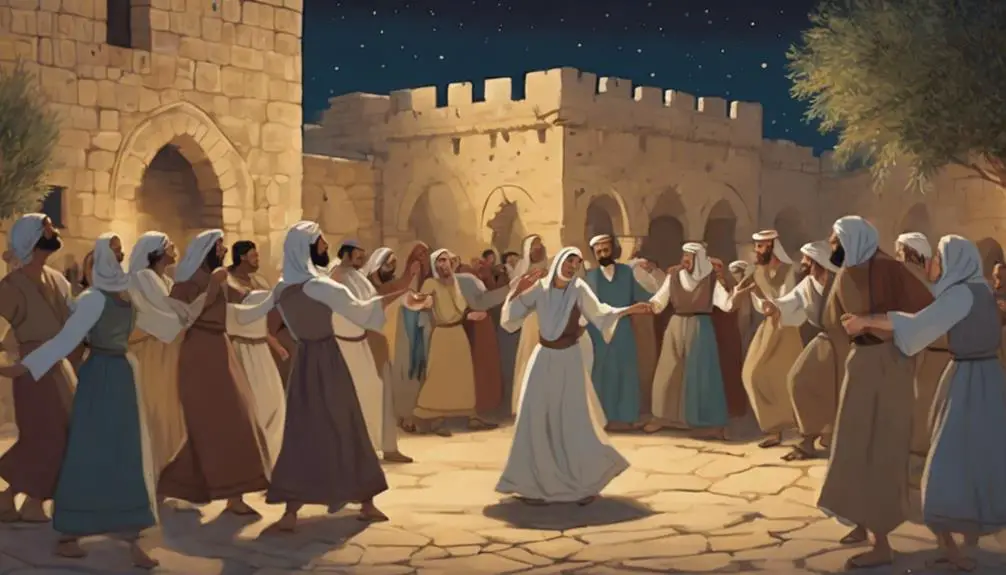
In biblical times, dance served as a multifaceted expression of joy, worship, and communal identity, deeply embedded within the social and religious fabric of ancient societies. You'd find that the ritual significance of dance was paramount, often acting as a conduit for spiritual experiences and divine encounters. This wasn't merely about physical movement; it was a profound way to connect with the divine, to express communal solidarity, and to celebrate significant moments in life.
Communal celebrations were often incomplete without the inclusion of dance. These events, ranging from victories in battle to harvest festivals, utilized dance not just as a form of entertainment but as a vital element of thanksgiving and communal memory. The collective motion and rhythm fostered a sense of unity and shared purpose among participants, reinforcing social bonds and communal identity.
The analytical exploration of dance in biblical times reveals its integral role in shaping the cultural and spiritual landscape of ancient communities. It wasn't an ancillary activity but a core expression of faith, joy, and communal cohesion. Through understanding the ritual significance and communal nature of dance, you gain deeper insight into the social and religious practices of biblical times.
Scriptural Mentions of Dance
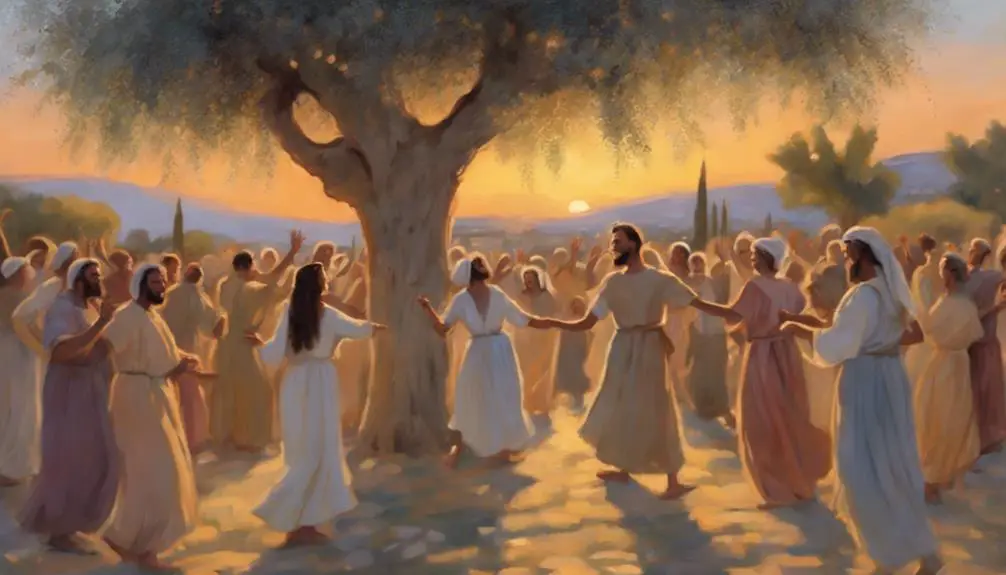
The Bible's narrative features numerous instances where dance emerges as a pivotal form of expression, celebration, and worship among its figures. This form of expression transcends mere physical movement, embedding itself deeply within the cultural and religious fabric of biblical times. Two of the most notable examples include David's celebration and Miriam's dance, both of which signify moments of great spiritual and communal significance.
Reference |
Context |
Significance |
|---|---|---|
Exodus 15:20-21 |
Miriam's dance after crossing the Red Sea |
Expresses triumph and gratitude |
2 Samuel 6:14 |
David's celebration before the Lord |
Symbolizes joy and reverence |
Psalm 149:3 |
General encouragement to dance |
Highlights dance as a form of praise |
Ecclesiastes 3:4 |
Acknowledges a time to dance |
Reflects on the seasons of human emotion |
Jeremiah 31:13 |
Promise of future joy |
Foresees dance as an expression of restoration |
Analyzing these scriptural mentions, one observes a pattern where dance serves not only as a response to divine acts but also as a communal activity that strengthens bonds and fosters a shared sense of identity. It's clear that dance, within the biblical context, holds a multi-dimensional role encompassing celebration, worship, and prophetic symbolism.
Jesus' Cultural Context
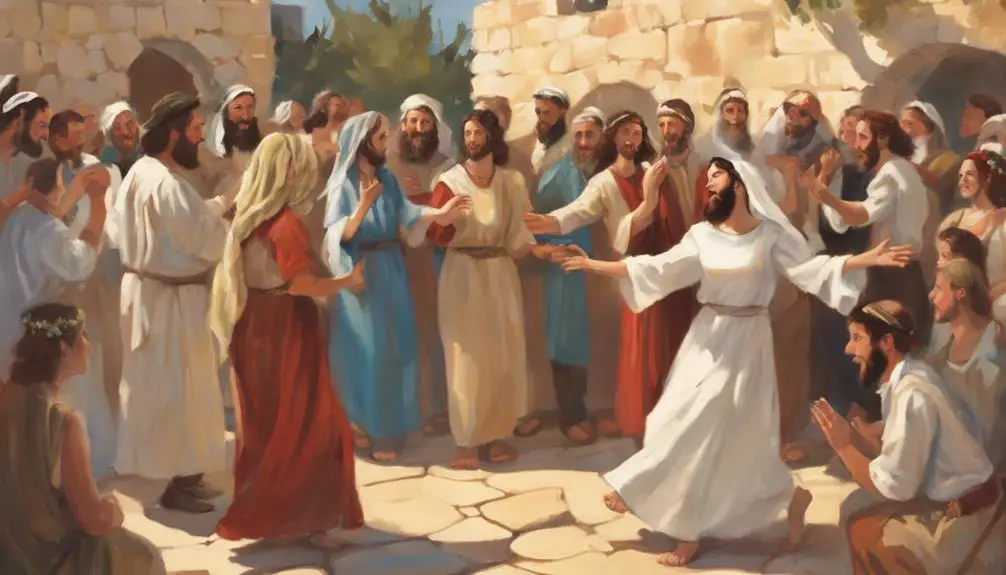
Understanding Jesus' cultural context requires examining the societal norms and religious practices of first-century Judea to grasp how dance might've fit into his life and teachings. First-century Judea was a mosaic of Aramaic traditions and Roman influences, with a population deeply rooted in Jewish religious practices and Messianic expectations. The Aramaic traditions of the time included various forms of artistic expression, among which dance was a significant component, often linked to religious and communal celebrations.
The Jewish people of Jesus' era were living under Roman occupation, which influenced their social and religious practices. Despite this, they clung to their traditions and the hope of a Messiah who'd liberate them. This expectation was intertwined with their religious observances, which included festivals and ceremonies where dance could have been present. Jesus, being raised in this context, would have been familiar with these practices and the cultural significance of dance.
Messianic expectations during this period were high, and any public figure like Jesus, who gathered a following, would have been scrutinized through this lens. His teachings and actions were often seen as fulfillment of prophetic traditions, which could include symbolic acts such as dance. However, analyzing how these expectations and cultural norms directly influenced Jesus' actions requires a deeper look into specific gospel narratives.
Analyzing Gospel Narratives
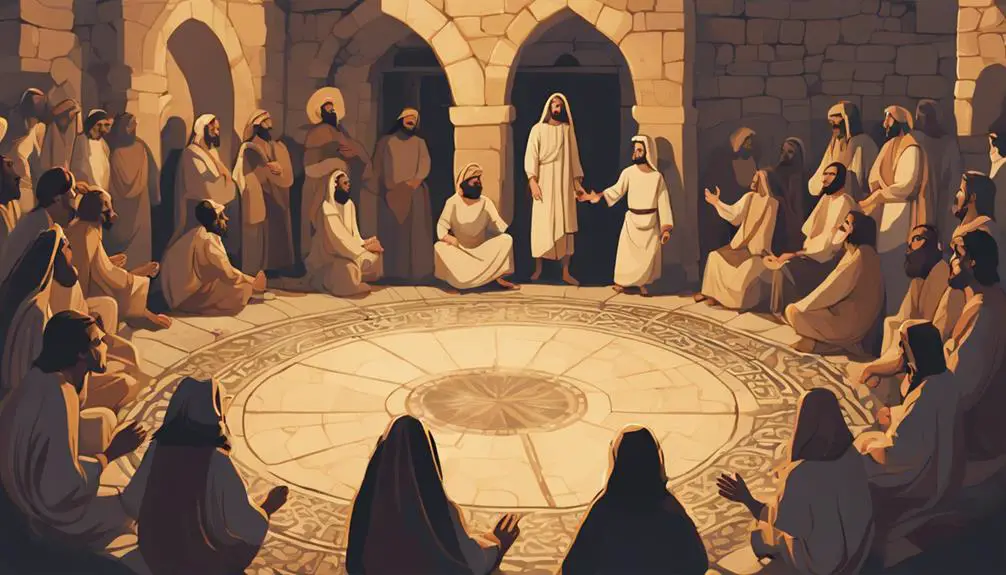
To analyze gospel narratives for evidence of Jesus dancing, we must scrutinize specific passages and their cultural contexts. This requires a deep dive into the texts, considering both their literal and metaphorical layers. Gospel metaphors, in particular, offer rich ground for narrative interpretations, suggesting layers of meaning beyond the surface.
- Examine parables and teachings: Many of Jesus' teachings use metaphorical language. Understanding these metaphors within their cultural context can reveal insights into the broader question of Jesus' participation in cultural practices, including dancing.
- Contextualize historical settings: The gospels were written in a specific historical context. Recognizing this context aids in interpreting actions and descriptions that might imply dancing or celebratory movements.
- Analyze the original Greek language: Some words or phrases could have held different connotations at the time of writing, possibly alluding to dance in ways not immediately apparent in English translations.
- Consider non-literal interpretations: Gospel narratives often employ rich symbolism. Exploring these symbolic layers may uncover indirect references to dance as a form of expression or worship.
Approaching the gospels with these analytical lenses allows for a comprehensive exploration of the texts, offering a deeper understanding of Jesus' life and actions within his cultural and historical framework.
Theological Implications of Dancing
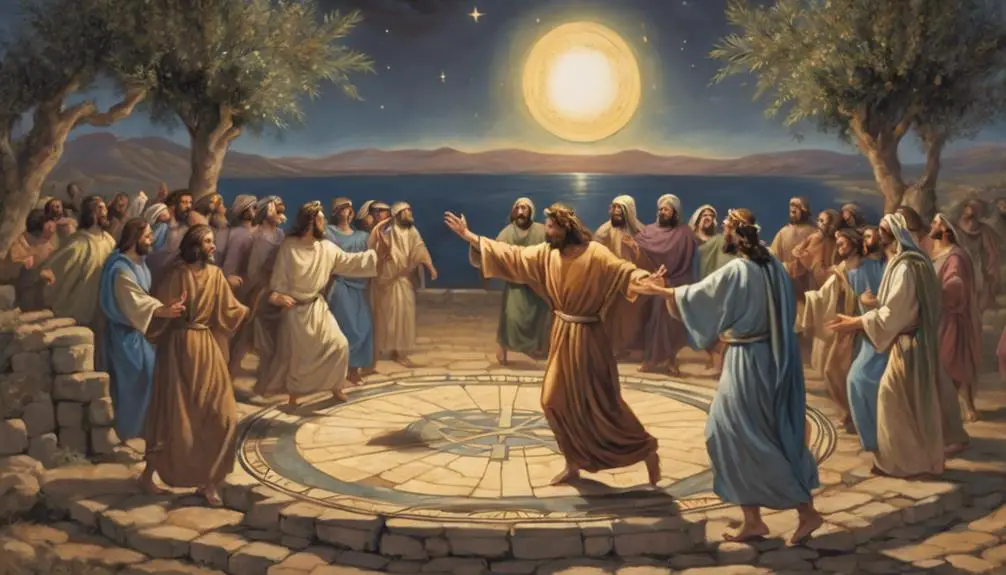
Exploring the theological implications of dancing opens a window into how sacred expressions of joy and worship can manifest within religious contexts. Historically, religious prohibitions against dancing have varied widely among different faith traditions, often reflecting broader societal norms and values. In some religions, dancing has been viewed as a potential gateway to moral decay, leading to strict regulations or outright bans. However, modern interpretations of religious texts and traditions increasingly recognize the potential for dance to serve as a profound form of spiritual expression and communal unity.
Analyzing these shifts requires a nuanced understanding of the historical contexts in which prohibitions were enacted and how contemporary believers reconcile these views with a desire for expressive freedom in worship. The tension between tradition and personal expression offers a rich area for theological exploration. It raises questions about the boundaries of acceptable worship practices and the role of cultural evolution in shaping religious experience. By examining the intersection of dance, religious prohibitions, and modern interpretations, you gain insight into the dynamic ways faith communities navigate the complexities of belief, tradition, and the human desire for expression through movement.
Frequently Asked Questions
How Has the Portrayal of Jesus' Relationship With Dance Evolved in Art and Literature Through the Centuries?
You've seen Jesus' relationship with dance evolve significantly through the centuries in art and literature. Artistic depictions have moved from conservative interpretations to those influenced by various musical influences, reflecting broader societal changes.
This evolution showcases how artists and writers interpret religious narratives through the lens of their cultural and temporal context, offering a fascinating insight into the changing perceptions of spirituality and expression in human history.
Are There Any Contemporary Religious Practices or Denominations That Particularly Emphasize Jesus' Supposed Engagement With Dance?
You'll find that contemporary religious practices have eagerly embraced dance interpretations, weaving them into modern worship. Several denominations spotlight Jesus' supposed engagement with dance, utilizing it as a vibrant component of their spiritual expression.
This trend reflects a broader, more inclusive approach to worship, allowing followers to connect with the divine through physical movement. It's a testament to how religious expression evolves, adapting ancient traditions to resonate with today's faithful.
How Do Non-Christian Religions View the Concept of Dancing in a Spiritual or Religious Context, and Do They Draw Any Parallels to Jesus' Time?
In exploring how non-Christian religions perceive dance in a spiritual context, you'll find that many incorporate dance metaphors and spiritual movements in their practices. These traditions often see dance as a form of expression that connects the physical to the spiritual, mirroring the unspoken but deeply felt.
While not directly drawing parallels to Jesus' time, they highlight a universal aspect of dance as a medium for spiritual connection and expression across different faiths.
What Psychological or Emotional Benefits Might Be Attributed to Dancing, and How Could These Have Impacted Religious Figures Like Jesus?
You might find that dance therapy offers significant psychological and emotional benefits, including enhanced emotional expression and mental health improvement. These benefits could have had a profound impact on religious figures like Jesus, providing a means for emotional expression and spiritual connection.
Can Archaeological Findings or Historical Artifacts Shed Light on the Role of Dance in Religious Ceremonies During Jesus' Era, Beyond What Is Described in Religious Texts?
Yes, archaeological findings and historical artifacts can illuminate the role of dance in religious ceremonies during that era. By examining dance origins and ceremonial costumes unearthed in digs, you'd gain a deeper understanding of how dance functioned in spiritual practices.
This exploration can reveal much about the societal and religious contexts of the time, offering insights that go beyond the narratives found in religious texts. It's a fascinating intersection of history, religion, and anthropology.
Conclusion
In conclusion, while the Bible depicts dance as a form of celebration and worship within Jesus' cultural milieu, there's no explicit scriptural evidence to confirm that Jesus himself danced. Analyzing the Gospel narratives and understanding Jesus' cultural context helps us appreciate the role of dance in biblical times.
However, the theological implications of dancing, in relation to Jesus' actions or teachings, remain speculative. This encourages a broader interpretation of scripture and challenges us to consider the diverse expressions of joy and worship in biblical history.



Sign up